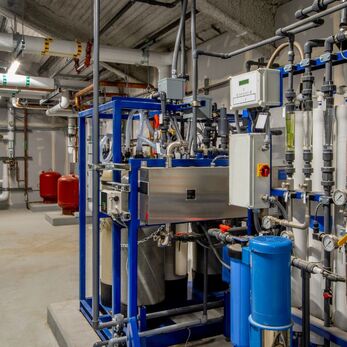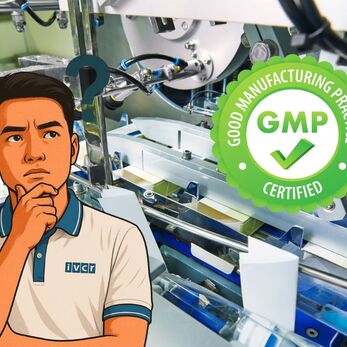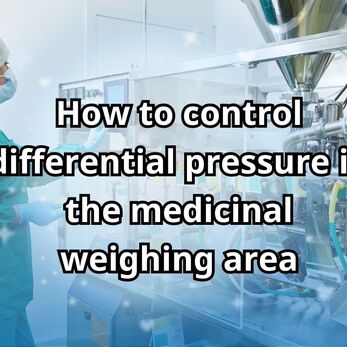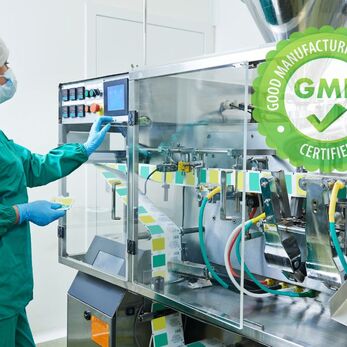- 1. Why Fine Dust Is a Major Risk in Tablet Manufacturing
- 2. Key Areas That Require Priority Dust Control
- 3. Common Technical Solutions for Fine Dust Control
- 4. Cleanroom Design for Effective Fine Dust Reduction
- 5. Key Considerations for Fine Dust Control in Pharma Manufacturing
- 6. Frequently Asked Questions on Fine Dust Control in Tablet Manufacturing
- 7. Contact VCR for Consultation and Support
In pharmaceutical production, especially tablets, fine dust control in the tablet production room plays an extremely important role in ensuring product quality and labor safety. Fine dust generated in stages such as powder mixing, tablet pressing or film coating can cause cross-contamination, distort the active ingredient content and affect the stability of the tablets. Therefore, designing a dust extraction and filtration system and maintaining a clean room environment that meets standards is a mandatory requirement in every modern pharmaceutical factory.
1. Why Fine Dust Is a Major Risk in Tablet Manufacturing
In pharmaceutical production-especially tablet manufacturing-fine dust is naturally generated in almost every process: weighing raw materials, powder mixing, tablet pressing, film coating, and packaging. These dust particles (PM2.5 - PM10) are ultra-fine, easily suspended in the air, and can spread throughout the production area if not effectively controlled.
Common Sources of Dust Generation
- Tablet press machines: High compression forces cause fine powder to escape through tablet feeding chutes or sampling points.
- Weighing and dispensing areas: Active ingredients are prone to dispersing when opening bags or scooping materials.
- Packaging process: Tablets falling onto chutes or conveyors may release dust from coating films or broken particles.
Serious Impacts of Fine Dust in Cleanrooms
- Cross-contamination between product batches if dust is not effectively extracted or filtered.
- Incorrect dosage caused by powder adhering to tablets or measuring tools.
- Reduced product stability due to dust affecting dissolution rates, moisture levels, or film integrity.
- Health risks for personnel exposed to airborne pharmaceutical powders over time.
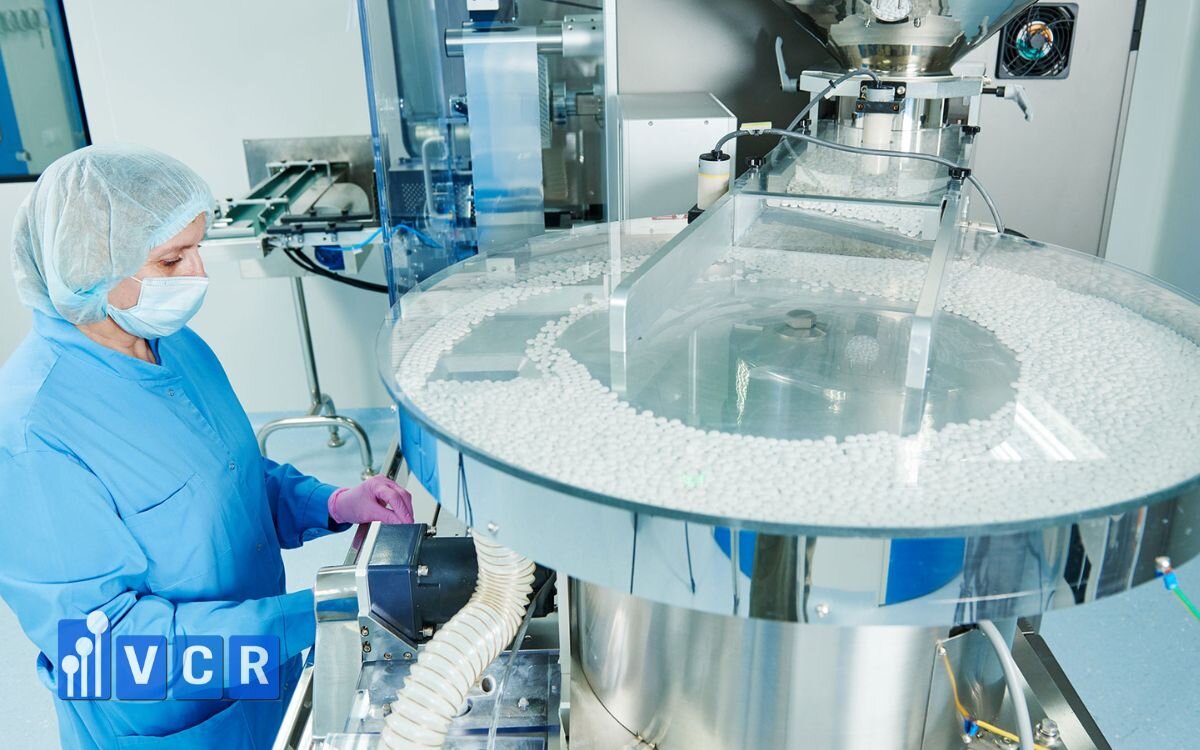
Relevant Standards for Dust Control
- GMP (Good Manufacturing Practice): Requires prevention of contamination and cross-contamination between products, batches, or actives.
- ISO 14644-1: Defines cleanroom classification based on the number of airborne particles-mandatory for pharmaceutical cleanrooms.
- HVAC & filtration system validation: Periodic validation is required to ensure dust levels remain within ISO limits.
2. Key Areas That Require Priority Dust Control
Fine dust is not evenly distributed throughout the production facility but is concentrated around direct handling points and mechanical operations. Identifying “dust hotspots” is essential to design effective and cost-efficient control systems.
Raw Material Weighing Room - Primary Dust Emission Area
- Dust is easily released when opening bags, pouring, or weighing powders.
- This area poses high cross-contamination risk, especially for potent or irritant actives.
- Should be equipped with dedicated dust extraction booths or Airflow Control Stations with integrated HEPA filters.
Tablet Compression and Encapsulation Areas
- Compression generates dust due to friction between tooling and powder.
- Dust may accumulate inside the machine or escape through gaps, polluting the surrounding air.
- Equip with point-of-source industrial vacuums, local dust extraction, or FFUs on the ceiling.
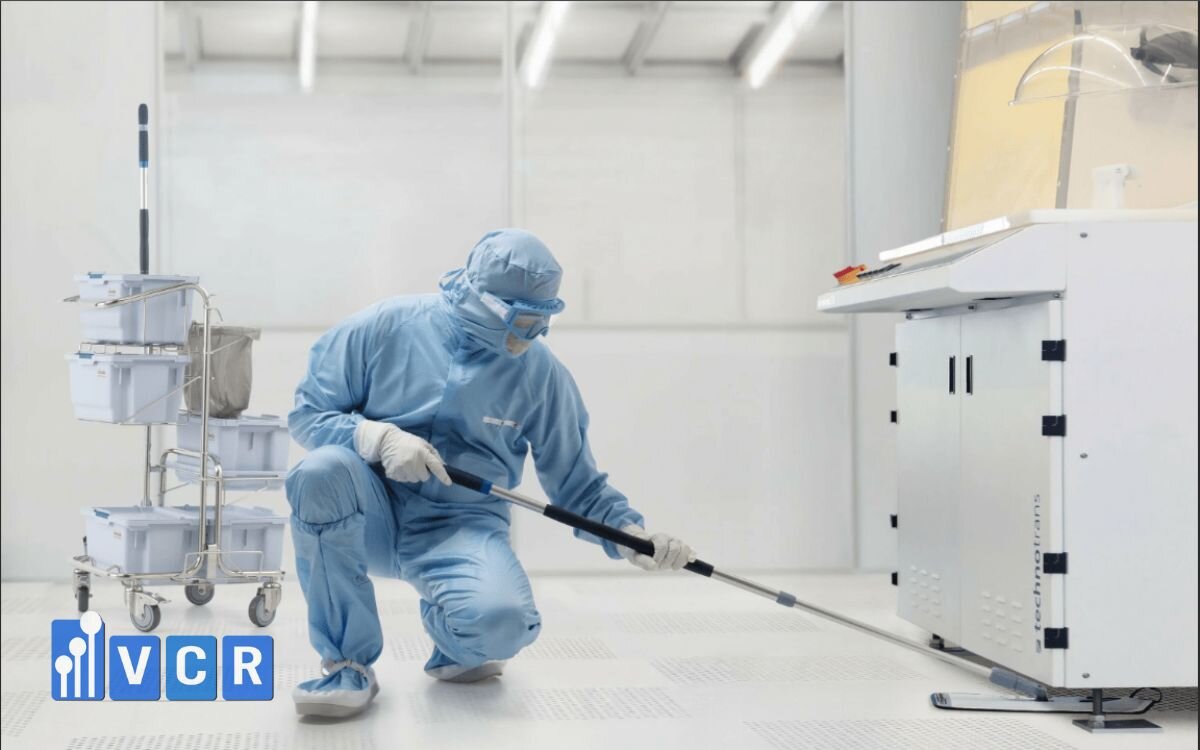
Packaging and Sorting Areas
- Often underestimated, yet many cross-contamination incidents occur during packaging due to broken tablets or label/film dust.
- Install top-down clean airflow, negative pressure wall vents, or floor-return air grilles.
Critical Dust Emission Points
|
Location |
Description |
Suggested Control Solution |
|
Raw material hoppers |
Pouring materials into mixers or presses |
Enclosed systems with built-in dust extraction |
|
Product conveyors |
Tablets prone to breaking or chipping |
Transparent shields + side extraction |
|
Packaging worktables |
Labeling, bottling, sealing |
Under-table vacuum or vertical extraction |
Properly identifying these priority zones not only improves dust filtration efficiency but also reduces equipment cost and HVAC maintenance in the long run.
See more: Periodic maintenance process of pharmaceutical clean room equipment
3. Common Technical Solutions for Fine Dust Control
To effectively control fine dust in tablet production, manufacturers often combine multiple technical solutions depending on zone application, dust levels, and required cleanroom classification. Below is a comparison table of the most commonly used solutions:
Comparison of Dust Control Solutions
|
Solution |
Primary Application |
Advantages |
Disadvantages |
|
FFU (Fan Filter Unit) |
Cleanroom ceilings, packaging zones |
- Integrated HEPA filters (99.97%@0.3µm) - One-way airflow - Modular installation |
- High initial cost - Regular filter replacement required |
|
GMP Industrial Vacuum |
Tablet presses, encapsulation areas |
- Captures dust at source - GMP-compliant - Easy to clean and move |
- Limited coverage - Requires manual operation |
|
HEPA Box Filters |
HVAC air inlets, airlocks |
- Filters airborne dust at entry points - Protects clean zones |
- Doesn’t handle internally generated dust - Filter replacement needed |
|
Mobile Dust Extraction Booths |
Weighing, dispensing, and manual handling areas |
- Portable and flexible - Optional HEPA integration |
- Lower filtration efficiency - Limited coverage area |
Recommended Combinations
- Weighing areas → Dust booths + portable vacuums
- Tablet press rooms → Source extraction + ceiling-mounted FFUs
- Packaging zones → FFUs + underfloor extraction grilles
- Airlocks and clean air supply → HEPA Box Filters
Solution selection should not rely solely on capital cost. Instead, it should be based on filtration effectiveness relative to cleanroom grade (ISO 7-8), risk of cross-contamination, and usage frequency of each zone.
4. Cleanroom Design for Effective Fine Dust Reduction
Controlling fine dust doesn't rely solely on equipment-it begins with optimized cleanroom design. A well-structured layout enables efficient airflow, minimizes dust accumulation, and reduces the risk of cross-contamination between zones.
Unidirectional airflow design
Clean air flows from ceiling to floor in a single, linear direction, without turbulence.
This carries fine dust away and expels it through filtration or extraction systems.
Recommended for ISO Class 5-7 zones, especially in tablet pressing and packaging areas.
Creating proper pressure differentials between rooms
According to GMP, a positive pressure gradient must be maintained from clean to less clean areas to prevent backflow of contaminated air.
Typical pressure differential: 10-15 Pa, depending on the required cleanliness level.
Use pressure gauges for continuous monitoring and interlocked doors to avoid pressure disruption during entry/exit.
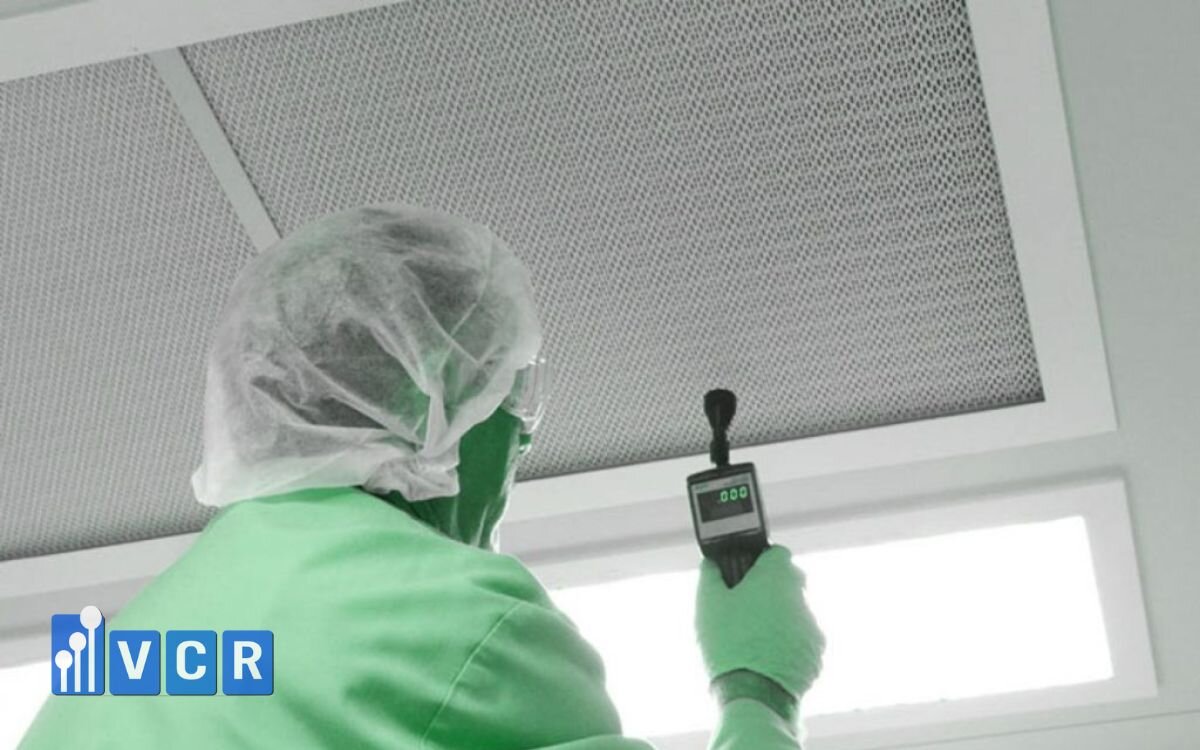
Using low-dust-retention interior materials
Prioritize stainless steel 304, anti-static plastic, and smooth epoxy-coated surfaces for walls, floors, and workstations.
Avoid porous, fabric, or rough-painted materials as they trap dust and are harder to clean.
Round off interior corners to prevent dust buildup and facilitate easy cleaning.
Wall or floor-based dust extraction systems
Install recessed floor suction vents along wall bases-where dust typically accumulates.
Combine with silent exhaust fans and pre-filter/HEPA systems for optimal filtration.
Ideal for high-traffic zones like packaging, material dispensing, and airlocks.
Integrating aerodynamic layout, anti-dust materials, and local extraction systems not only reduces HVAC operating costs but also forms a solid foundation for maintaining ISO-class conditions and GMP compliance over the facility’s lifecycle.
See more: 5 common GMP errors that cause factories to be audited and rejected
5. Key Considerations for Fine Dust Control in Pharma Manufacturing
In tablet production environments, controlling fine dust is not just a technical matter-it’s a strict regulatory requirement under GMP and ISO 14644. Below are important factors to ensure effective dust management and audit readiness.
Regular measurement of fine dust concentration (PM2.5, PM10)
Use a particle counter to monitor dust levels in critical production zones.
Recommended frequency: weekly, or after general cleaning-especially in weighing, tablet pressing, and packaging rooms.
Measurement results should be recorded and compared with ISO 14644-1 limits (typically ISO 7 or ISO 8 for pharma).
Validation documentation for air filtration systems
Equipment like FFUs, HEPA Boxes, and GMP vacuum units must be regularly tested:
- HEPA filter efficiency (≥99.97%@0.3μm)
- Airflow rate and pressure drop measurements
Maintain calibration certificates, filter replacement logs, and acceptance reports-these documents are required for GMP audits.
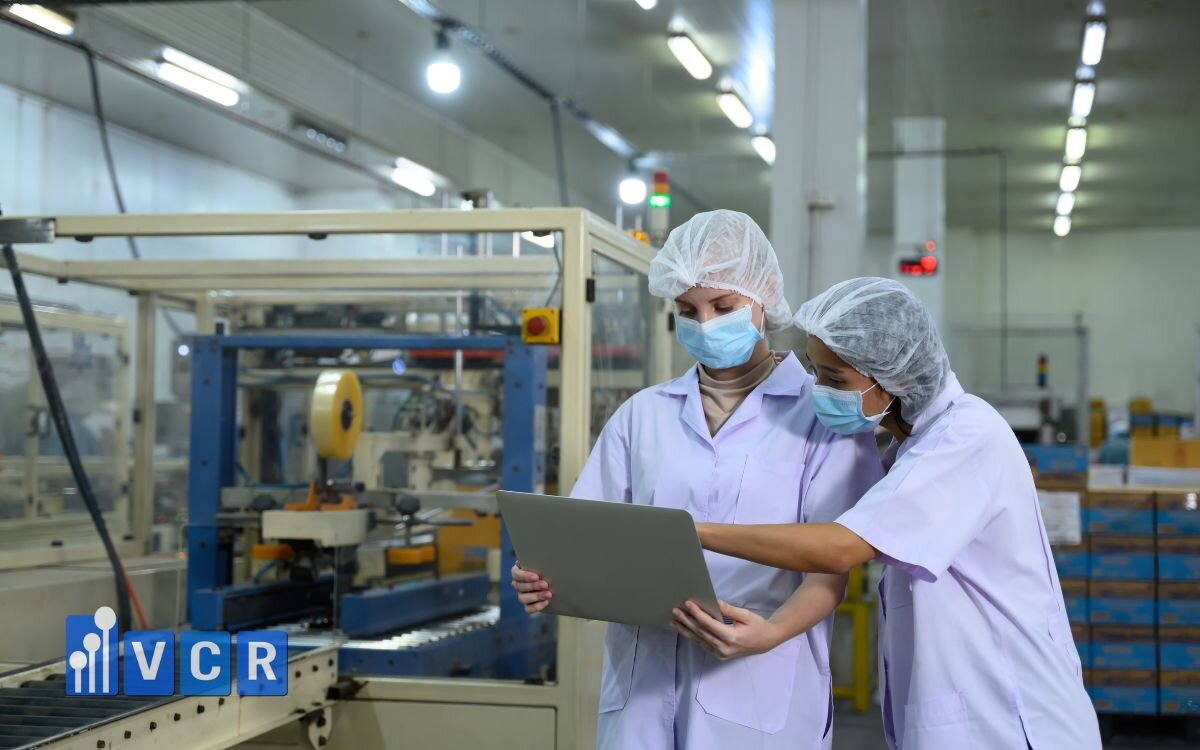
Training personnel to minimize dust generation
Operational errors such as pouring materials too quickly, leaving bags open, or improper cleaning can increase airborne dust.
Personnel must receive regular training in:
- Correct cleanroom handling techniques
- Emergency procedures when filtration systems malfunction
- Proper cleaning of tools and equipment without spreading dust
Integrating dust control into GMP SOPs
Dust control should be embedded in Standard Operating Procedures (SOPs), including:
- Weighing and packaging room operations
- Scheduled cleanroom sanitation
- HVAC and filtration system inspections
This ensures procedural transparency, ease of monitoring, and proof of compliance during audits and validations.
See more: Anodizing or Powder Coating: Which Technology is More Suitable for GMP Cleanrooms?
6. Frequently Asked Questions on Fine Dust Control in Tablet Manufacturing
1. How do I know if my air filtration system effectively controls fine dust?
Use a particle counter to measure airborne particle concentration in key areas.
Then compare the data with ISO 14644-1 particle count limits (e.g., ISO 7 allows up to 352,000 particles/m³ ≥0.5μm).
2. Is FFU mandatory in the tablet compression area?
Not mandatory under GMP, but recommended if the facility requires:
- ISO 7 or higher cleanroom classification
- Tight dust control at the tablet press
- Reduced load on central HVAC systems
3. Can a mobile dust extraction booth replace a cleanroom HVAC system?
No. Booths are supplemental solutions for specific manual operations like weighing or dispensing.
They cannot replace an HVAC system designed to:
- Maintain pressure, temperature, and humidity
- Provide uniform clean air distribution
- Recirculate and filter air across the entire room
4. Are there any standards specifying fine dust limits in pharmaceutical plants?
GMP does not define specific PM2.5/PM10 thresholds like environmental standards do.
However, GMP requires cross-contamination control-and fine dust is a key vector.
Thus, manufacturers should reference ISO 14644-1 to establish and monitor cleanroom particle limits.
7. Contact VCR for Consultation and Support
Controlling fine dust in tablet production areas is more than a technical requirement-it’s a critical factor in ensuring product quality, GMP compliance, and worker safety. Selecting the right equipment, designing cleanrooms with proper airflow, and implementing aligned operational procedures allow pharmaceutical facilities to operate stably and pass audits with confidence.
Need a GMP-compliant fine dust control solution for your pharmaceutical plant?
VCR provides full-service support-equipment supply, cleanroom design, and validation consulting-specialized for tablet production environments.
Contact our VCR experts today for a free 1:1 consultation!
Hotline: 090.123.9008
Email: [email protected]
Website: https://phongsachduocpham.com/
Diep VCR
Vietnam Cleanroom (VCR) là một doanh nghiệp hàng đầu tại Việt Nam chuyên cung cấp thiết bị và giải pháp phòng sạch. Với hơn 10 năm kinh nghiệm phục vụ các dự án phòng sạch đạt tiêu chuẩn GMP, VCR tự hào mang đến các thiết bị kỹ thuật cao như: đồng hồ chênh áp, khóa liên động, đèn phòng sạch, Pass Box, FFU (Fan Filter Unit), buồng cân, HEPA Box, Air Shower, cửa thép phòng sạch, tủ cách ly (ISOLATOR), và nhiều loại phụ kiện chuyên dụng khác
Không chỉ là nhà cung cấp thiết bị, VCR còn là đơn vị phân phối độc quyền các sản phẩm từ các thương hiệu quốc tế như LENGE và BLOCK Technical, đồng thời cung cấp các giải pháp phòng sạch toàn diện cho các lĩnh vực như dược phẩm, điện tử, y tế, thực phẩm và mỹ phẩm. VCR có đội ngũ chuyên gia giàu kinh nghiệm, kiến thức chuyên sâu về phòng sạch, hỗ trợ tư vấn về tiêu chuẩn, thiết kế, thi công và vận hành phòng sạch theo chuẩn ISO, GMP, HACCP, ISO 14644
VCR hướng đến trở thành thương hiệu quốc dân trong ngành phòng sạch, với mạng lưới cung ứng rộng khắp, VCR có các văn phòng tại Hà Nội, TP. HCM, đáp ứng mọi yêu cầu từ xây dựng đến nâng cấp môi trường sản xuất đạt chuẩn
Email: [email protected]
Điện thoại: (+84) 901239008
Địa chỉ:
VP Hà Nội: 9/675 Lạc Long Quân, P. Xuân La, Q. Tây Hồ, TP. Hà Nội
VP Hồ Chí Minh: 15/42 Phan Huy Ích, P.15, Q. Tân Bình, TP.HCM
Hãy liên hệ với VCR để tìm hiểu thêm về lĩnh vực phòng sạch hiệu quả nhất nhé!




